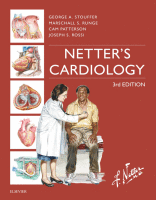Physical Address
304 North Cardinal St.
Dorchester Center, MA 02124

Our understanding of the complexities of congenital heart disease, which is a deviation from normal cardiac anatomic development that affects 8 in 1000 births, has progressed immensely since the establishment of the Board of Pediatric Cardiology in 1961. Improvements in…

Sometime at the turn of the millennium, due to improved treatment and outcomes, the prevalence of congenital heart disease in adults surpassed that of children. With longer term survival, this disproportionate share of adult patients will continue to grow. Many…

Etiology and Pathogenesis Congenital heart disease refers to any heart defect present at birth. The etiology of such defects is multifactorial, with environmental and genetic factors playing important roles. In utero development can be affected by metabolic stress from toxins,…

Competency of the atrioventricular valves allows blood to enter the ventricles, where pressure is generated. When adequate systolic blood pressure is generated, the aortic and pulmonary valves open, allowing blood to enter the arterial system. The atrioventricular valves close, preventing…

Acquired disease of the right-sided cardiac valves is much less common than disease of the left-sided valves, possibly because of the relatively lower pressures and hemodynamic stress to which the right-sided valves are subjected. Indeed, right-sided valvular dysfunction most commonly…

Etiology and Pathogenesis Acute rheumatic fever (ARF), also known as scarlet fever, is caused by an autoimmune reaction to group A β-hemolytic streptococcal pharyngitis, which is caused by the common childhood infection of bacterial streptococcal pharyngitis, also known as “strep…

The origin of the word mitral comes from the Latin mitre , which means “bishop or Pope's hat” due to the physical resemblance between them. The mitral valve is a bicuspid valve, that is, it consists of two leaflets that…

The aortic valve is a semilunar valve that includes three pocket-like cusps of approximately equal size. The normal aortic valve opens completely during systole, allowing ejection of blood from the left ventricle (LV), whereas closure during diastole prevents retrograde blood…

Technological advances have improved the versatility and function of implantable devices used to treat bradyarrhythmias and tachyarrhythmias. Surgical placement of pacemakers and implantable cardioverter-defibrillators (ICDs) can be performed on an outpatient basis, with low risk and minimal morbidity, which allows…

Syncope is a transient, self-limited loss of consciousness and voluntary muscle tone. It is typically followed quickly by spontaneous recovery of consciousness. The incidence rate of syncope varies between 0.80 and 0.93 per 1000 person-years. Syncope accounts for 3% to…